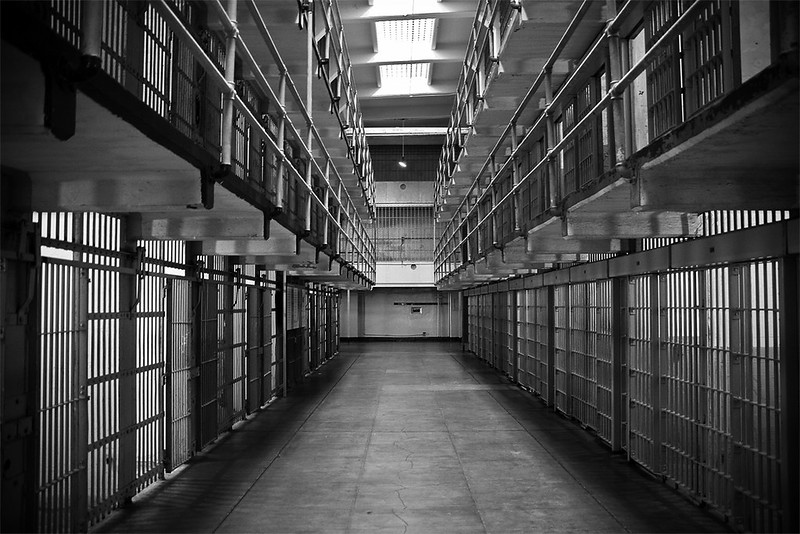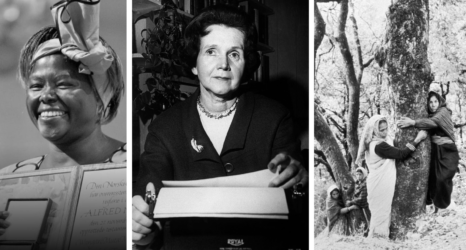Those who are incarcerated are more likely to be impacted by climate change and environmental toxicity.

Late last month, the United Nations’ Intergovernmental Panel on Climate Change (IPCC) released their sixth assessment report, which examines the impacts and solutions to climate change. It showed that society is not doing enough to mitigate the effects of climate change. From extreme flooding in Florida from Tropical Storm Elsa in July, to the wildfires that ravaged California last year, climate change is being realized in our everyday lives—with no end in sight. In fact, in the next 30 years, the cost of flood damage is expected to rise by 26 percent, according to a recent study. The IPCC report identifies half of the global population as living in highly vulnerable locations.
While these events are terrifying for all, climate-induced catastrophes disproportionately affect people who are incarcerated, as they are physically unable to flee. There are “54 jails, prisons, and detention centers nationwide that hold more than 1,000 people that are above the 95th percentile for wildfire risk,” according to The Intercept. There are also approximately 621 correctional facilities in the U.S. that are posed to major flood risks—even in landlocked states such as Tennessee, Ohio and West Virginia.
Ironically, people who are incarcerated are also frequently on the front lines of environmental disaster relief, used for their cheap or free labor. Incarcerated individuals in 192 fire crews fought the fires that raged through California in 2020—often earning less than three dollars a day while working 24-hour shifts. Incarcerated people are the grunt labor used to respond natural disasters—the ones filling 12,000 sandbags by hand after Hurricane Matthew landed in 2016; doing 6,600 pounds of laundry for emergency shelters after Hurricane Sandy hit in 2012; and cleaning up debris (without pay) after Hurricane Irma devastated Florida in 2017.
Prisons and jails are also often built upon, embedded with, or near environmental toxicity. In 2017, the Earth Island Journal and Truthout published a comprehensive report documenting the environmental hazards of prisons, which showed nearly 600 federal and state prisons were within three miles of a Superfund site on the National Priorities List, and more than 100 of the prisons were within one mile of a Superfund site. They also found that prisons were not equipped for environmental problems, such as heatwaves or contaminated water.
Although this report summarized many of the internal and external environmental factors affecting prisons and jails, the report’s conclusions are already outdated, as the effects of climate change worsen. The most recent research about this topic, released just a few days ago by The Intercept, documents the heat, wildfire and flood risks for 6,500 detention facilities across the United States.
“I don’t see a lot of [studies about the impacts of climate change and environmental toxicity on incarcerated individuals] coming out. My guess is that somebody is doing it right now,” said David Naguib Pellow, professor of environmental studies and director of the Global Environmental Justice Project at the University of California, Santa Barbara. “It’s now becoming a growth area, so I’m quite certain that in the coming years we’ll see the fruits of that labor. I think we’re definitely seeing an upward trajectory in reporting, and focusing on this, but not nearly enough.”
Environmental Justice and Activist Responses
Prisons are “toxic” for a variety of reasons, said Robin (last name withheld), a regional organizer at The Campaign to Fight Toxic Prisons (FTP), an organization that uses grassroots organizing, advocacy and direct action to help people who are incarcerated—especially those in dangerous environmental conditions.
“People tend to ask us which prisons are toxic and we really believe that all of them are toxic. They are both physically toxic through the lands to the ecosystems,” Robin told Ms., “but it’s also toxic mentally to the entire community. Even if there were no water pollution or mold issues or things like that, they would still be toxic.”
In order to combat these toxicities, Robin believes “folks who are most impacted—whether that’s incarcerated folks or people on the ground—should be the ones leading the organizing.” In doing so, FTP uses collaborative strategizing to help campaigns against incarceration think through their goals and allies.
“Most critically important leaders in movements for climate justice and environmental justice are people who are constitutionally, theoretically legally enslaved,” said Pellow, who challenges free people to be allies to people who are incarcerated. “We all need to breathe air that’s clean, we need to drink water that is clean, we need to drink, we need to consume food that is healthy.”
At the same time, Pellow says ironically incarcerated individuals who want to share what is happening behind bars might need to break the law. They are “able to communicate about the conditions inside those prisons, largely because they have cell phones—which of course, are illegal,” he told Ms. “And so in many ways, the only way we are learning the truth about what’s happening on the inside is people actually who have already been accused of and convicted of and locked up for allegedly breaking a law have to break the law even further.”
Pellow says people who are incarcerated require allies on the outside to make visible their struggles. An example of this is when Wayland Coleman, who is incarcerated in MCI-Norfolk, brought to light the toxicity of the water at the prison in 2017. In doing so, he made his voice be heard through #DeeperThanWater, a coalition of organizations that works to expose the human rights abuses occurring behind bars (an organization created partially in response to the conditions at MCI-Norfolk).
Especially since COVID, the need for a partnership between those who are incarcerated and those who are free is especially urgent. Robin says she spent most of 2021 mailing surveys out to 10 percent of the prison population in Kentucky in an attempt to hear more about what was going on inside. According to Robin, although the state government was saying that they were taking the necessary precautions to keep people incarcerated in safe conditions, the survey found the opposite to be true: “The absolute bare minimum [was] being done,” she said. “[People who are incarcerated] were being ignored, they were only receiving two cold meals a day, medical attention was nonexistent and COVID was running rampant because [people working in prisons] were putting people [incarcerated] in large groups together and still switching people from room to room after they had tested positive.”
Incarcerated people are facing unsafe and unhealthy conditions in large part as a result of COVID as well as climate change. According to Robin, to make a systemic change in how the U.S. approaches these disasters, “it takes a lot more pressure and a lot more shouting to have our voices heard. Because nothing is ever done unless it’s forced to.” But, “changing the system is possible.”
To view The Intercept’s interactive map of detention facilities that have heat, wildfire and/or flood risk, head here.
Up next:





